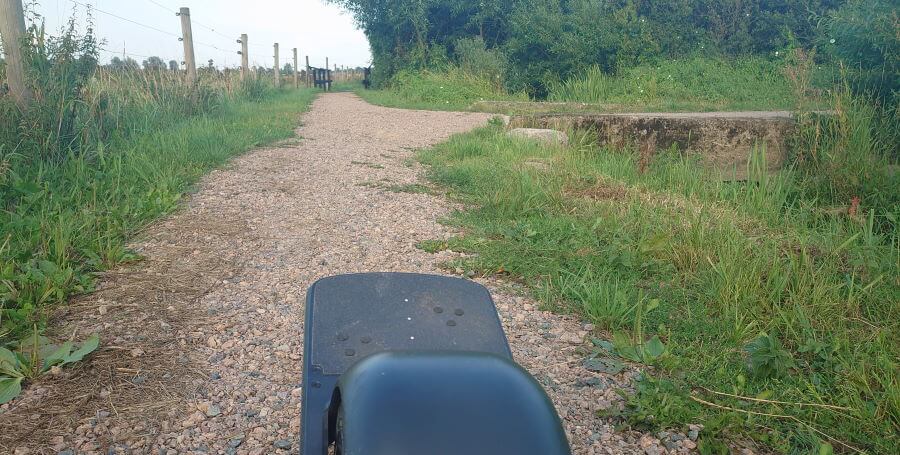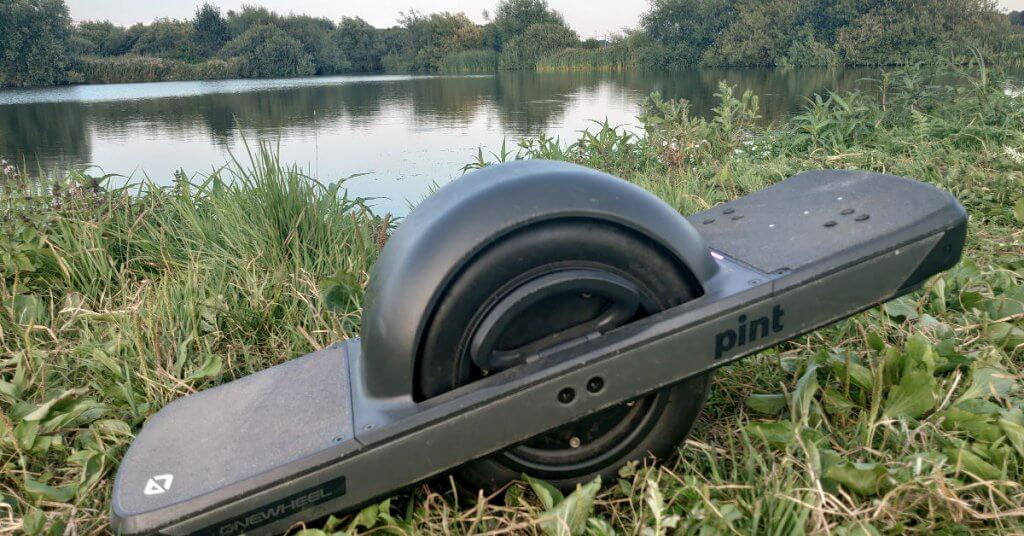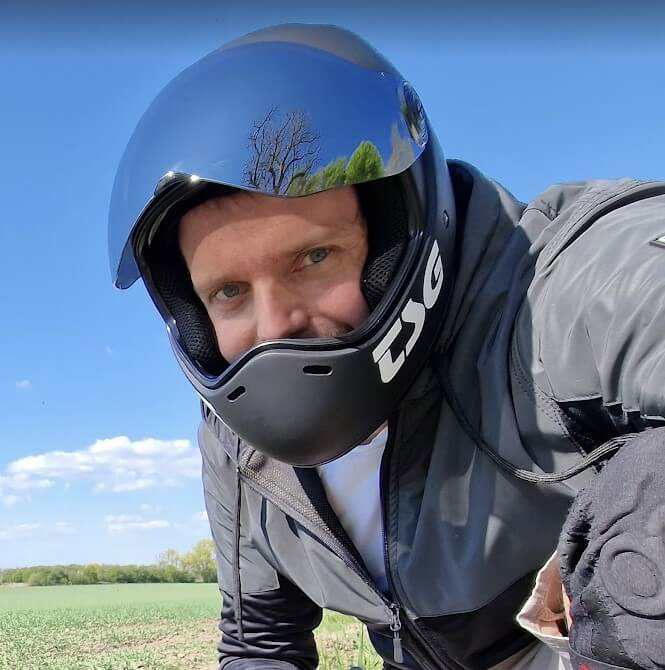After mastering your Onewheel on the pavement it’s time to hit some trails, here is where the real fun begins! All Onewheels are great all-terrain boards. To make your life easier here are some tips for off-road and trail riding with your board.
If you have never ridden off-road before, it is quite different from the pavement. A good idea is to practice around your neighborhood, going up and down driveways, off curbs, grass, bumpy dirt patches, etc before heading out on the trail.
Off-road or trail riding requires you to pay attention to your surroundings and watch the trail ahead to anticipate obstacles in your way. And keep in mind if there is any legal consideration for where you are riding.
Use the right setting for trail riding
The setting of your board changes the way it rides and handles on the ground. For trail riding torque and clearance become important factors for you to be able to climb hills and handle bumps without hitting the ground or nosedive.
Onewheel XR:
For the Onewheel XR, the best mode (if you are not into custom shaping) is to use Delirium. It gives you the maximum torque for powering over obstacles and pulling out of holes.
I common question asked is if you should use Elevated instead of Delerium, definitely use Delerium for the torque. There is enough clearance for the board, else go into custom settings.
As stated above Delirium is a good start but may not be for everyone. Every rider has their style of riding, based on their skill, body type, and weight. If you want to go into custom settings for off-road I recommend starting with +2/0/+5 for better control and stability. Then customize it to your liking after riding for a couple of miles.
Onewheel Pint:
The Onewheel Pint doesn’t have any custom settings so here there is only one option to turn up the torque, use Skyline.

Stance
The stance is one of the most important things to master when riding off-road or over obstacles. Always keep your knees bent. The knees will help you to absorb all kinds of imperfections, roots, lumps, and bumps in the road. Once you get good enough at the knee bend they will act as shock absorbers and you will be able to go over bumps at almost normal road speed (or as fast as you feel comfortable with).
Ankles need to be loose, the board will twist and turn when traveling on the ground, fighting this will result in an unstable ride and foot fatigue. The goal is to keep the body straight above the wheel and the ankle following the board’s movements.
Your head should be facing forward, keeping your eyes looking in front of you so you can anticipate what’s coming ahead can react accordingly. When trail riding you will need to be able to anticipate and prepare yourself for the terrain, bending your knees, and shifting your body weight to overcome the obstacles. If you’re always waiting and reacting, you’re more likely to get surprised and caught off balance resulting in a fall.
Turning contact to the ground
Trails often consist of slippery surfaces like fine dirt, sand, mud, or worse case water puddles. When going over an obstacle try to keep the board as flat as possible (along the motor axle axis). Keeping the board flat will increase the possible surface area of the tire that’s in contact with the ground. Reducing the risk of the wheel slipping and losing traction.
When you turn, instead of carving on the edge of the tire, try to turn by swinging your hips and feet. Like you are doing a 180. This gives an increased contact area and better traction to the surface.
Another good tip regarding tire contact is to always have the board under you directly when making a transition from one surface to another, and try to be horizontal keeping your center of gravity above the tire.
Tire pressure
To gain more traction on the ground it’s recommended to lower the pressure of your tire before hitting the trail. Check your tire pressure, if you normally run at 18-20 try a couple of PSI lower. Don’t forget to pump the tire back up when you go back to riding on the pavement. I use an electric pump from Xiaomi Portable Air Compressor making these changes a breeze when switching between off-road and commuting to work.
If you are uncertain use my Onewheel tire pressure calculator, It has both the imperial and metric systems.
Terrain Selection
While the Onewheel is designed for versatile all-terrain riding, understanding how to navigate various surfaces is crucial for an optimal riding experience. You will encounter a spectrum of terrains, each requiring unique adjustments in technique. Experienced riders will know this by heart, here’s a breakdown of some common terrains and tips for adapting your riding style:
- Gravel Paths:
- Approach gravel paths with a slightly more relaxed stance to absorb vibrations.
- Maintain a consistent speed to glide smoothly over gravel without losing control.
- Be cautious when turning, as loose gravel may affect traction.
- Sand Trails:
- Ride with a slightly lower tire pressure to increase the tire’s surface area and enhance stability on sandy surfaces.
- Lean back slightly to prevent the front of the board from digging into the sand.
- Use gradual turns and avoid abrupt movements to navigate sandy trails effectively.
- Rocky Terrain:
- Keep a firm but flexible stance to absorb the impact of rocks on the trail.
- Lift your knees higher to navigate over larger rocks or uneven surfaces.
- Choose a path that allows for a smoother ride, avoiding jagged or excessively rocky areas.
- Dirt Trails:
- When riding on dirt trails, maintain a balanced center of gravity to handle uneven terrain.
- Be mindful of loose patches and adjust your speed accordingly to prevent slipping.
- Practice controlled turns to navigate twists and turns on dirt paths effectively.
- Muddy Sections:
- Approach muddy sections with caution, as they can impact traction.
- Keep a moderate speed and avoid sudden movements to prevent slipping.
- Clean the tire treads if mud accumulates to maintain optimal grip.
Adapting your riding technique based on the terrain ensures a safer and more enjoyable off-road experience. Experiment with different approaches, and as you become familiar with each type of terrain, you’ll develop the skills needed to tackle diverse landscapes with confidence. Always prioritize safety, use safety gear, and adjust your riding style to the specific challenges presented by the trail you choose. It’s always ok to jump off and carry the board over an obstacle.
Legal Considerations
Before embarking on off-road adventures with your Onewheel, it’s essential to be aware of and adhere to local laws and regulations governing off-road riding. Regulations can vary significantly from one region to another, so keep this in mind before riding off. Here’s a brief guide on navigating legal considerations:
- Research Local Regulations:
- Investigate the specific laws and regulations in your area related to electric personal transporters and off-road riding. These regulations may include restrictions on where you can ride and safety requirements.
- Trail Designations:
- Be aware of designated off-road trails or areas where Onewheeling is permitted. Some regions may have specific trails or parks catering to off-road enthusiasts, while others may prohibit such activities in certain zones.
- Permits and Permissions:
- Inquire about the need for permits or permissions for off-road riding in public spaces. Some areas may require permits for recreational activities, and obtaining these permits ensures compliance with local regulations.
- Environmental Conservation:
- Respect and follow any rules aimed at protecting the environment. Certain natural reserves or ecologically sensitive areas may have restrictions on off-road activities to preserve local ecosystems.
- Community Guidelines:
- Stay informed about any community guidelines or rules set by local Onewheel or electric rideable communities. These guidelines may offer insights into preferred riding areas, safety practices, and community expectations.
- Safety Gear Requirements:
- Some regions may have specific safety gear requirements for off-road riding. Ensure that you comply with any regulations regarding helmets, pads, or other protective gear.
- Educate Yourself:
- Stay informed about any updates or changes in local regulations. Joining online forums or communities dedicated to Onewheel enthusiasts can provide valuable information and insights into the local riding scene.
By taking the time to understand and adhere to local laws, you not only ensure a legal and responsible off-road riding experience but also contribute to the positive image of Onewheel riders in your community. Remember that responsible riding fosters a harmonious relationship between riders and the broader community.
Train your muscles
Your muscles need to strengthen, the easiest and most fun way is just to ride more and remember to rest when you are getting foot fatigue. The body will start to train and adapt, getting more muscle memory of how to handle obstacles like bumps and dips.

Protection
I always recommend riding with protection, especially when trail riding, you will most likely fall, and it is a part of the ride. A key difference when starting to hit trails is the risk for sticks and stones. It’s, therefore, better to ride in more protective clothing like pants and jacket/long sleeves in case of a fall.
I love my Lazyrolling Armored Hoodie and use this to protect my upper body and back in case of falling and hitting a stone at my spine. Want to know more? Read my 1-year Review of the Armored Hoodie.
You get $20 off if you use my coupon code FALLMAN on orders above $179.
Upgrades
If you want to up your game there is always a possibility to upgrade your ride. This is not necessary to do as a beginner, and I strongly advise you to not upgrade or ad additional accessories before you have become comfortable with your board and feel like Onewheeling and floating is for you. The only upgrade I would recommend for new riders is to add front wheels to your board to make it a bit safer.
Change tire
Changing the tire is a more advanced upgrade. You can do it yourself and there are great guides online. I haven’t done it myself and there are Onewheel or tire shops that will help you to break and seat the bead.
Onewheel Pint:
The stock tire is a lot rounder than the XR, making it a little bit more wobbly when riding on trails. You will need to work more to counter this compared to your XR friends, get used to using your arms. Upgrading to a flatter tire with or without treads will make a big difference for trail riding. There will be less strain on your ankles reducing the need to counterbalance and adjust with a wider tire.
Onewheel XR:
You can upgrade to a treaded tire if trail riding is what you want to do the majority of your time. Else start riding with your stock VEGA.
Better control and locked-in feel
Adding accessories like the Flight Fins will make you feel a lot more secure on the board and address the risk of bumping off the board on the trail. Flight Fins make you locked in with the board and for heavy trail riding, this is for sure a great addition to your board. For more casual riders this is not a necessity.
Concave footpads and Griptape
If you’re having issues with the grip of your board, and have a good shoe, then I would recommend replacing the grip tape with a coarse and adding a concave rear pad. This will make you more connected and reduce the risk of your foot gradually bouncing around and off the board mid-ride.

Sunglasses – eye protection
The beauty of riding trails is often the big range and changing of scenarios, you can be riding up a sunny hillside to next going into the woods and sunlight hitting you from in between the trees. When riding through this changing environment with high shade/sunlight contrast, normal sunglasses are not optimal. They make it difficult to see objects on the trail.
Instead, use glasses with a yellow/orange tint, they allow for a better shadow-to-light transitional vision. Using glasses also offer eye protection from dust, branches, and trees that might hit your eye.
If you are riding in the darkest of forests with all shade or on the hillside in the full-blasting sun then use what’s best for that trail.
One foot or wheel slip alarm?
If you are getting the alarms and your phone is beeping/bussing all the time then you should just turn off the one-foot alarm and wheel slip in the settings. It was one of the first things I did, it’s not needed.
Disclosure: Some of the links above are affiliate links. This means that, at zero cost to you, I will earn an affiliate commission if you click through the link and finalize a purchase.
Is Onewheel all-terrain?
The Onewheel is made for all-terrain riding. Compared to electric skateboards it can handle grass, trails, sand, and heavy off-road riding. This is because of the big Go Kart tire that will move over obstacles and track on all terrains. Whether you’re carving streets or crushing trails.
Can Onewheel go uphill?
The Onewheel handles going uphill on a variety of terrains as long as the slope is below 15%.
Can Onewheel go downhill?
The Onewheel handles going downhill. When it’s too steep so the tail hits the ground it’s possible to carve down the slope. Breaking and slowing down to control the speed going downhill will recharge the battery.


